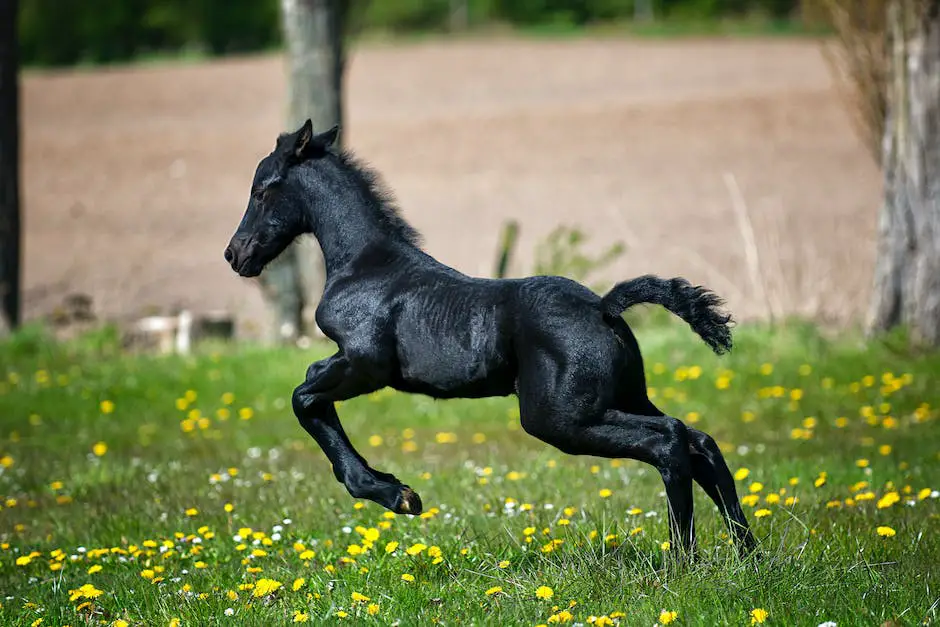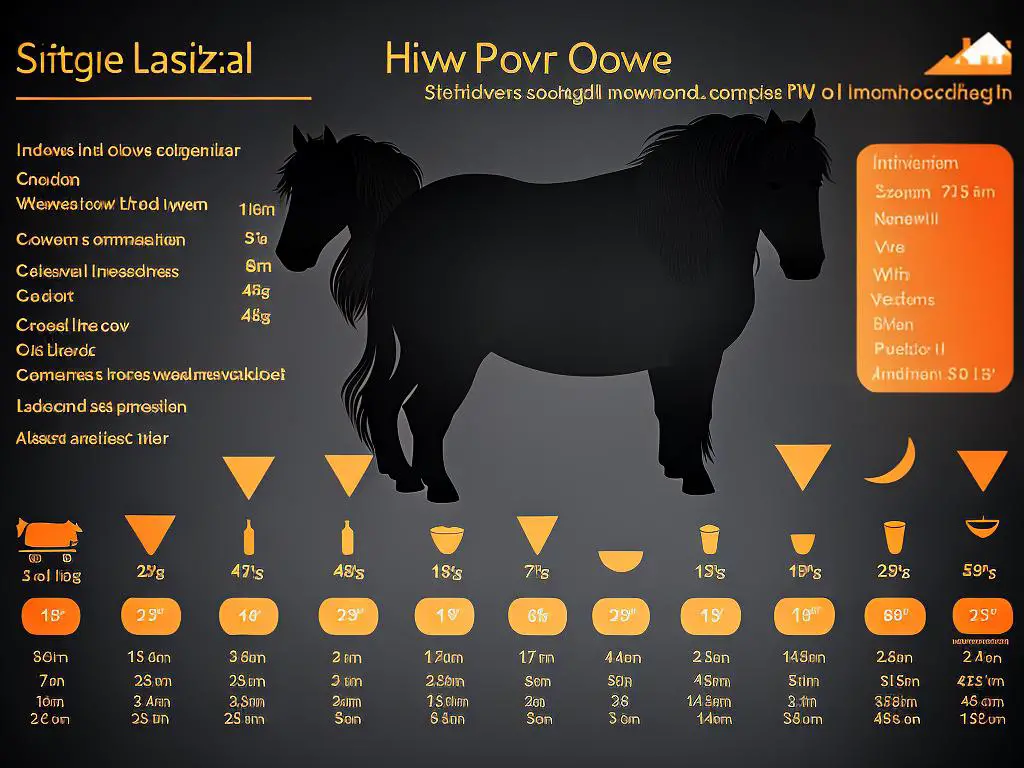The majestic shire horse, renowned for its physical grandeur and fascinating versatility, certainly raises intrigue among equine enthusiasts, breeders, and prospective horse owners alike. Often recognized for its muscular physique, diverse color range, and unique size variations, the shire horse provides a captivating study for all. Equally fascinating is the shire horse size chart, a valuable instrument offering granular details about the horse’s size variance throughout its lifespan. This comprehensive tool not only satiates the curiosity of those enchanted by the breed, but also serves as a catalyst presenting essential data to breeders and trainers for pertinent decision-making processes.
Table of Contents (Horspedia)
Characteristics of Shire Horses
Physical Traits and Muscular Build of Shire Horses
Shire Horses are widely recognized for their remarkable size and muscular build, making them one of the largest horse breeds in the world. Males typically stand at a range of 17 to 19 hands (68 to 76 inches), while females commonly measure at a slightly smaller range of 16 to 18 hands (64 to 72 inches). The average weight for a Shire horse also greatly varies, with males reportedly reaching between 1,800 to 2,400 pounds, and females generally weighing between 1,600 to 2,200 pounds. The horse’s broad back and strong overall muscle structure contribute to its ability to pull heavy loads, a historical role for this breed. Their hooves are large and broad, further adding to their strength and stability. Their legs are notably feathered, providing not only a unique appearance but also practical protection from harsh weather.
Color Variations Among Shire Horses
Shire Horses exhibit a variety of coat colors, with the most common being black, brown, bay, and grey. Black is a dominant color, followed by a rich brown and bay with black points such as the mane, tail, and lower legs. Gray Shire horses go through a progressive greying process where they are born darker, usually black or brown, and progressively lighten over the years. Coat patterns are generally solid, but some Shire horses may exhibit minimal white markings on their face, legs, or body. This breed is also recognized for its long, flowing mane and tail, often in contrasting color to their body.
The size chart for Shire horses is as diverse as it is comprehensive, which is fitting given this breed’s status as one of the largest in the world. The chart accounting the breadth in size, weight, and even color, beautifully encapsulates the singular nature of these magnificent equine giants.

Understanding the Shire Horse Size Chart
Deciphering the Shire Horse Size Chart
The Shire horse size chart serves as a fundamental key to unlock the understanding of this larger-than-life breed’s growth patterns and average dimensions. Such charts typically list the expected height and weight brackets for Shire horses, delineated by certain age milestones – though it’s crucial to remember that individuals may slightly deviate from these averages. The height measurements expressed in hands (with one hand being the equivalent of about four inches) are taken from the ground to the top-most part of the horse’s withers, or shoulders.
It’s especially important not to overlook the fact that Shire horses reach maturity at varied ages as compared to other breeds. During early stages, the Shire foals exhibit phenomenal growth, effectively dwarfing their counterparts. A noticeable transformation in size is seen during their adolescent years and by the time they turn 5 or 6 years old, Shire horses have usually achieved their full height. However, they may continue to broaden, gaining more muscle and strength, thus, adding to their impressive stature.
Size Comparison: Shire Horses Vs. Other Breeds
Shire horses stand out on the size chart due to their remarkable size, often regarded as one of the largest horse breeds globally. To provide some context, an average horse reaches a height of approximately 15.2 hands and weighs between 900 to 2,200 pounds, depending on the breed. Meanwhile, adult Shire horses tower at 17 to 19 hands. Male Shire horses typically weigh around 2,000 to 2,400 pounds, while females range from 1,800 to 2,200 pounds. This comparison emphasizes the outstanding size of the Shire breed, underlining their standing within the category of large draft horses.

Importance and Application of Shire Horse Size Chart
The Significance of Shire Horse Size Charts
For horse owners, breeders, and aficionados, a Shire horse size chart is more than just an interesting visual guide; it’s an incredibly useful resource. Understanding the data on this chart is crucial because a Shire horse’s size is intrinsically linked to several factors such as its health, capabilities, and overall performance. For example, there’s a significant correlation between a Shire horse’s height and weight and its strength and stamina. Therefore, by analyzing the size chart, one can accurately assess a Shire horse’s physical potential and make well-informed decisions.
Size Chart Applications: Impacts on Breeding, Training and Care
The shire horse size chart plays an instrumental role in breeding, training, and care processes. Breeders can utilize the chart data to strategically pair horses with complimentary attributes and sizes, ultimately enhancing the breed’s desired traits. For trainers, the size chart guides in adjusting techniques, equipment, and intensity appropriate to the horse’s size. As for horse care, a sudden deviance from the chart’s figures might signal health issues, facilitating prompt intervention. Thus, the shire horse size chart’s application extends far beyond merely showcasing dimensions, providing beneficial insights for overall horse management.

Indeed, with a strong grasp of the nuances of a shire horse size chart, equine enthusiasts can deepen their understanding of this magnificent breed, while horse breeders find ease in mapping out breeding strategies tailored to specific size preferences. Further, trainers can utilize this chart to design an optimal training regimen, ensuring the horse’s wellbeing is prioritized at every stage. The shire horse size chart, thus, is much more than a mere illustration of size variations. It serves as an indispensable tool in championing the strength and splendor of the shire horse while providing actionable insights for quality equine care and management.